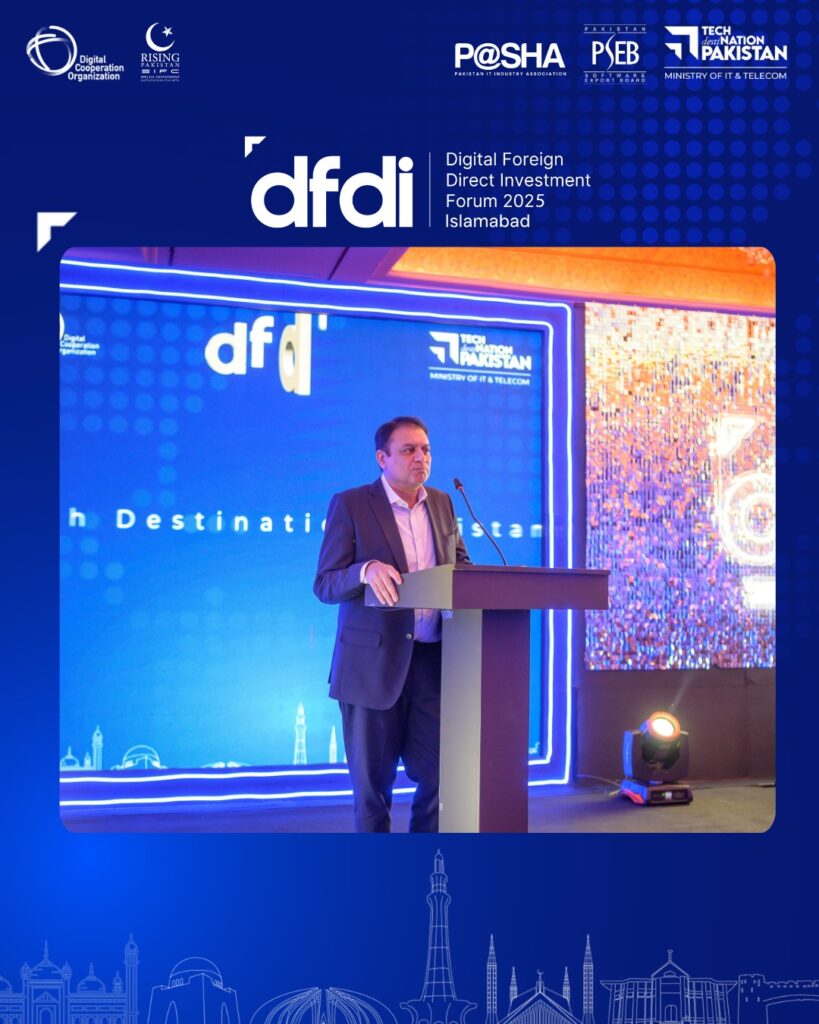Table of Contents
🌐 DFDI-Backed Digital Economy Projects: Powering the Next Wave of Global Growth
DFDI-backed digital economy projects are fast becoming the cornerstone of sustainable economic development in the 21st century. As the digital revolution reshapes every facet of life—from how we work and learn to how we access healthcare and government services—Digital Foreign Direct Investment (DFDI) has emerged as a key driver of transformation.
By supporting scalable, tech-based solutions, DFDI-backed digital economy projects enable developing nations to leapfrog traditional infrastructure gaps and compete globally. These projects combine international investment, local innovation, and strategic partnerships to foster inclusive, resilient, and tech-driven economies.
🚀 What Are DFDI-Backed Digital Economy Projects?
DFDI-backed digital economy projects are cross-border, digitally enabled initiatives funded by foreign investors, often in partnership with local governments, private sectors, and NGOs. These projects typically aim to:
- Digitize critical public and private services
- Expand access to internet and mobile connectivity
- Promote digital literacy and upskilling
- Create new job markets in digital sectors
- Foster financial inclusion and e-commerce adoption
Examples include mobile banking platforms, digital health apps, e-learning portals, e-governance tools, and smart agriculture systems.

📱 Fintech and Digital Payments
One of the most impactful areas for DFDI-backed digital economy projects is financial technology (fintech). These projects empower underserved populations by offering access to digital wallets, online banking, and credit systems.
Key Benefits:
- Financial inclusion for the unbanked
- Fast, transparent transactions
- Support for micro, small, and medium enterprises (MSMEs)
Example: In Nigeria, DFDI-backed startups like Flutterwave and Paystack transformed digital payments and opened international markets to local merchants.
🛒 E-Commerce and Marketplaces
DFDI is a powerful catalyst for the e-commerce sector, enabling the launch of scalable platforms that connect producers, consumers, and logistics networks.
How DFDI-backed Digital Economy Projects Support E-commerce:
- Investment in digital logistics infrastructure
- Online marketplace development for artisans and farmers
- Training programs for sellers and SMEs
Example: In Kenya, DFDI-backed platform Twiga Foods uses digital supply chains to connect small-scale farmers with urban retailers, reducing waste and increasing profits.
🧑🏫 Education and Digital Upskilling
DFDI-backed digital economy projects in education promote lifelong learning and workforce development by funding:
- E-learning platforms with AI-driven content personalization
- Digital literacy campaigns in rural and underserved areas
- Coding bootcamps and tech apprenticeship programs
Example: A DFDI collaboration in India helped scale BYJU’s platform to millions of learners, including those in non-English speaking regions.
🏥 HealthTech and Digital Healthcare Services
The healthcare sector is also benefiting from DFDI-backed digital economy projects, which improve health outcomes through:
- Telemedicine services for remote communities
- Mobile diagnostic and e-prescription platforms
- Electronic health record (EHR) systems
Example: Bangladesh’s partnership with international tech firms resulted in a mobile maternal health app used by over 1 million women.
🏛️ E-Governance and Public Service Delivery
Governments are leveraging DFDI to modernize and digitize citizen services. These DFDI-backed digital economy projects include:
- Online portals for taxes, licenses, and legal documentation
- Blockchain-based land registries and identity systems
- Digital feedback and grievance redressal mechanisms
Example: Rwanda’s IremboGov, a government portal developed through a DFDI initiative, allows citizens to access over 100 services online.
🌾 Smart Agriculture and AgriTech
Digital agriculture is an emerging focus of DFDI-backed digital economy projects. These initiatives use technology to:
- Monitor soil and weather with IoT sensors
- Offer real-time market prices and crop advisory via SMS
- Reduce middlemen with direct-to-market digital platforms
Example: In Uganda, a DFDI project launched a digital marketplace that increased smallholder farmer income by 45% in one year.
⚡ Infrastructure and Connectivity Expansion
A critical prerequisite for a thriving digital economy is infrastructure, and DFDI is funding large-scale projects in:
- Mobile broadband networks and satellite internet
- Public Wi-Fi zones and smart city technologies
- Cloud storage and national data centers
These DFDI-backed investments ensure rural and urban populations alike benefit from reliable, high-speed connectivity.
💼 Economic Growth and Job Creation
DFDI-backed digital economy projects generate direct and indirect employment by:
- Creating tech-based jobs (developers, data analysts, marketers)
- Stimulating MSME growth in rural areas
- Building remote freelance and digital service economies
They also contribute to GDP growth by enabling innovation-driven entrepreneurship and global market access.
🌍 Advancing the Sustainable Development Goals (SDGs)
DFDI digital projects directly contribute to multiple SDGs, including:
- SDG 1: No Poverty (via job creation and fintech)
- SDG 3: Good Health and Well-being (via e-health)
- SDG 4: Quality Education (via e-learning)
- SDG 9: Industry, Innovation, and Infrastructure
These projects represent a model of responsible investment that aligns profit with purpose.
🧩 Challenges in DFDI-Backed Digital Economy Projects
While DFDI-backed digital economy projects promise transformative impact, they also face a unique set of challenges—especially when implemented in developing or emerging markets. These challenges arise due to the complex mix of stakeholders, infrastructure limitations, regulatory hurdles, and socio-economic diversity.
Understanding these obstacles is crucial for optimizing the design and success of DFDI-supported initiatives. Below are the most common challenges faced by DFDI-backed digital economy projects, along with strategies to address them.
1. 🏛️ Regulatory and Policy Barriers
One of the foremost challenges in DFDI-backed digital economy projects is navigating inconsistent or outdated digital regulations. Many developing countries lack comprehensive legal frameworks for:
- Cross-border data transfer
- Digital identity verification
- E-commerce taxation and protection
- Cryptocurrency and digital banking compliance
This uncertainty can deter investors or cause implementation delays.
✅ Solution: Governments must work with international development agencies and legal experts to modernize digital policies and create investor-friendly environments.
2. 📡 Limited Digital Infrastructure
DFDI-backed projects often target underserved populations, but many of these regions suffer from:
- Poor internet connectivity or bandwidth
- Unstable electricity and lack of data centers
- Inadequate access to mobile devices or smart technologies
These limitations can render even well-funded digital solutions ineffective without additional infrastructure investment.
✅ Solution: Include phased infrastructure development in project design and leverage public-private partnerships to fund internet and electricity expansion.
3. 🛡️ Data Privacy and Cybersecurity Risks
DFDI-backed digital economy projects rely heavily on the collection and storage of sensitive user data. Without strong security frameworks, they are vulnerable to:
- Data breaches and cyberattacks
- Misuse of personal information
- Violation of global compliance standards (e.g., GDPR)
This not only risks user safety but can damage public trust in digital platforms.
✅ Solution: Implement cybersecurity-by-design principles, adopt international data protection protocols, and provide user data rights and encryption measures from the start.
4. 🧠 Digital Literacy and Skills Gap
A major hurdle in scaling DFDI-backed digital economy projects is the lack of digital literacy among target populations. Challenges include:
- Low awareness of digital tools and platforms
- Lack of skills needed to operate apps or devices
- Limited understanding of online safety and cyber hygiene
Without user adoption, even the most innovative solutions may fail to gain traction.
✅ Solution: Integrate large-scale digital training, awareness campaigns, and localized support centers as core components of each project.
5. 💬 Language and Cultural Barriers
In diverse regions, language differences and cultural perceptions about technology can act as hidden barriers to adoption. For instance:
- Platforms built in English may exclude non-English-speaking users
- Cultural beliefs may limit the use of digital healthcare or financial tools
- User interfaces may not be intuitive or inclusive
✅ Solution: Localize content and UI/UX, involve local stakeholders in design, and run culturally-sensitive outreach programs.
6. 💰 Overdependence on Foreign Capital
While DFDI provides critical funding, many DFDI-backed digital economy projects are over-reliant on foreign investment. This creates risks such as:
- Funding gaps if investors pull out
- Lack of local ownership or long-term sustainability
- Project direction driven more by profit than impact
✅ Solution: Include local governments, communities, and entrepreneurs in co-financing and co-ownership models to ensure longevity and relevance.
7. 🔄 Fragmented Partnerships and Coordination Failures
Large-scale digital economy projects often involve multiple stakeholders—investors, government bodies, NGOs, tech firms, etc. Without effective coordination, this can result in:
- Duplication of efforts
- Resource mismanagement
- Misaligned timelines and objectives
✅ Solution: Establish a unified project management office (PMO) or lead agency to coordinate all partners and ensure transparency, accountability, and delivery.
8. 📉 Weak Monitoring and Impact Measurement
Many DFDI-backed digital economy projects lack robust metrics to measure success, leading to:
- Inability to course-correct
- Misuse of funds or inefficient strategies
- Lack of learning and replication for future projects
✅ Solution: Embed key performance indicators (KPIs), third-party audits, and real-time monitoring dashboards from day one.
9. 🗳️ Political Instability and Corruption
In regions with volatile political climates or weak governance, digital economy projects may face:
- Abrupt policy changes or funding withdrawals
- Bureaucratic bottlenecks and corruption
- Limited enforcement of agreements and IP protections
✅ Solution: Structure contracts with political risk insurance, arbitration clauses, and work through multilateral organizations when possible.
10. ⚠️ Resistance to Change
Finally, many DFDI-backed digital economy projects encounter resistance from:
- Traditional institutions afraid of losing control
- Local vendors displaced by digital alternatives
- Public skepticism about surveillance or privacy risks
✅ Solution: Focus on stakeholder engagement, participatory design, and change management programs that build trust and demonstrate benefits over time.ic planning, public-private partnerships, transparent governance, and community-driven implementation.
🔮 Future Outlook of DFDI-Backed Digital Economy Projects
As digital adoption increases globally, we can expect:
- More blockchain and AI-powered DFDI initiatives
- Growing emphasis on climate-tech and green digital solutions
- Enhanced regional DFDI partnerships between developing countries
- Integration of virtual economies, digital IDs, and Web3 services
These advancements will further empower emerging economies and democratize access to global innovation.

📢 Final CTA – Ready to Go Digital with DFDI?
🌟 Kickstart Your DFDI-Backed Digital Economy Project
Whether you’re a government, entrepreneur, or NGO—partner with us to scale digital solutions that change lives.
📞 Let’s Build the Future Together
📩 info@freelanceagency.net | 🌐 www.freelanceagency.net
❓ FAQs – DFDI-Backed Digital Economy Projects
1. What is a DFDI-backed digital economy project?
It’s a tech-based initiative in sectors like finance, education, and governance, funded by foreign investors through Digital Foreign Direct Investment.
2. Which sectors benefit the most from these projects?
Fintech, e-commerce, healthtech, edtech, agriculture, and e-governance are top sectors.
3. How do these projects help reduce poverty?
By creating jobs, enabling digital access, and promoting financial inclusion among underserved populations.
4. Can small businesses benefit from DFDI-backed projects?
Yes, SMEs often gain access to digital platforms, financing, and new markets through these initiatives.
5. How can I start a DFDI-backed project?
Partner with an experienced digital investment agency, secure legal/regulatory approvals, and align with government digital priorities.
Follow us on Facebook for Quick Response & Quires – Digital Foreign Direct Investment (DFDI)
